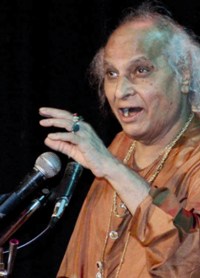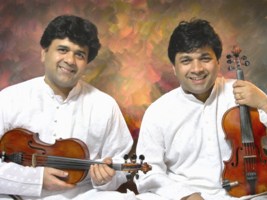SPOTLIGHT

The Madras Youth Choir
Still going strong - V. RAMNARAYAN
We walk into a rehearsal of the Madras Youth Choir, and find a group of middle-aged but dedicated chorists from soprano to bass focused on practising a variety of songs based on Indian classical and folk music idioms, adapting Western harmonic arrangements. The brainchild of the late composer and pioneer of Indian choral music M.B. Srinivasan, the unique choir is 40 years old. The young musicians who joined him back in 1971 are still as enthusiastic as ever about his legacy, though no longer young.
Led by its president K.S. Subramaniam, retired bureaucrat and well known translator of Tamil author Jayakanthan, MYC is still alive and kicking. The secretary D. Ramachandran and P.C. Ramakrishna sing bass doing themselves and the choir proud with the high quality of their wholehearted singing. Other senior members are equally dedicated to the cause, concentrating hard on the song at hand.
DEBATE

Where words fail, music speaks - GANESH-KUMARESH
First there is silence, then there is sound. Then there is language; and then there is a theme. The first thing that penetrates silence is sound. There are two types of sounds – musical and unmusical, nada and noise. The nada of the tambura is all pervasive and soothing. That is the first layer in the fabric of Carnatic music – sruti. The sound wave from the tambura is not regional, not religious. It has no words. But it conveys peace, calm and tranquility. Isn’t that the end result that good music must produce?
Now, if a musician has to penetrate this tranquil nada already created and create something more on that, he has to use two tools – raga and tala. Again, both these are non-regional and non-religious. One is melody and the other is rhythm. The nature of melody conveys the context of the mood. Raga also means colour and content. The nature of rhythm and tempo conveys the pace and the pulse of the music.


